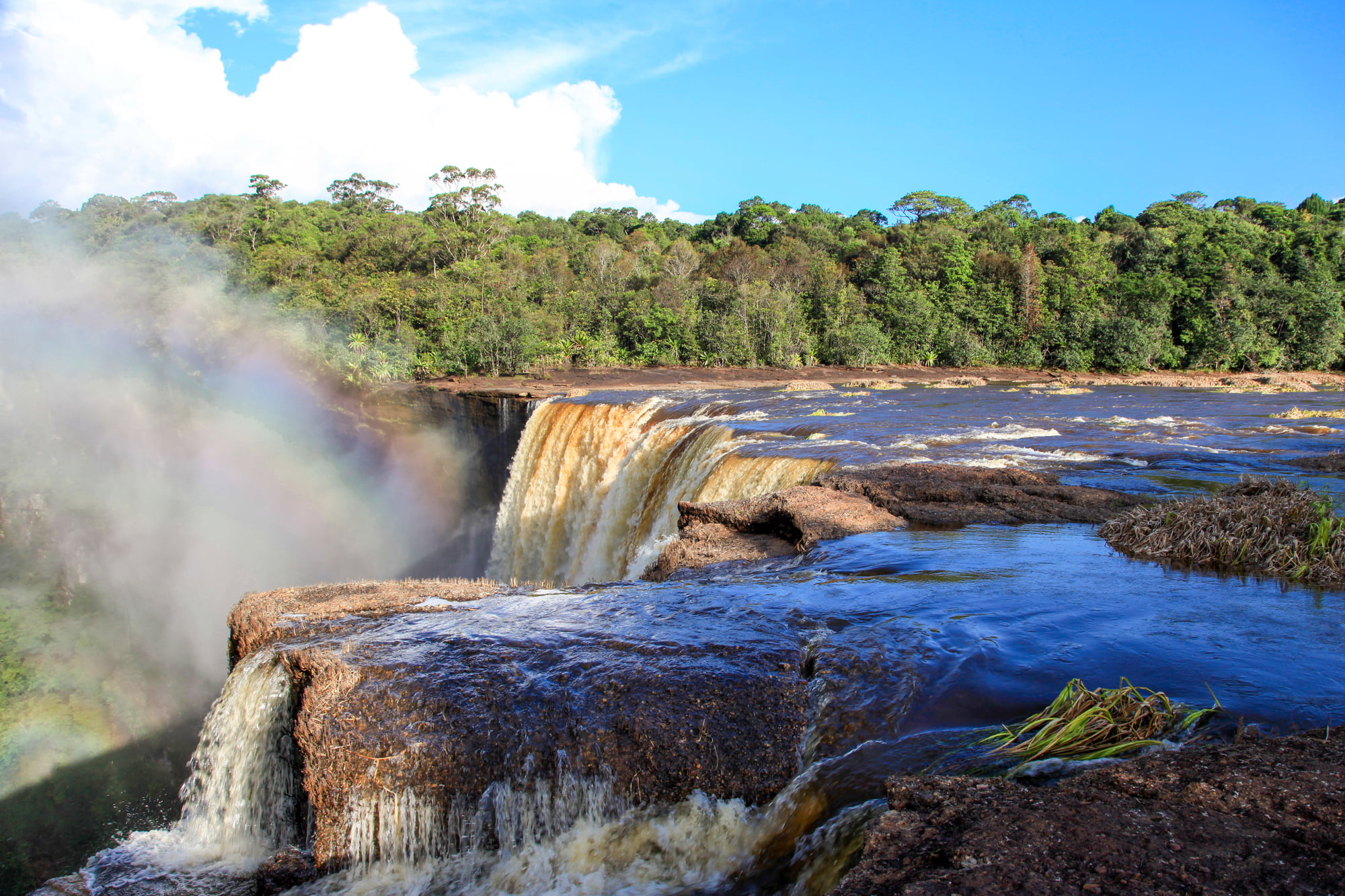Exploring Guyana: A Comprehensive Guide
What to See and Do
- Kaieteur Falls
- Description: One of the world’s highest single-drop waterfalls, located in Kaieteur National Park. It’s five times the height of Niagara Falls.
- Activities: Guided tours, nature walks, birdwatching.
- Georgetown
- Description: The capital city of Guyana is known for its British colonial architecture.
- Key Attractions: St. George’s Cathedral, Stabroek Market, Botanical Gardens, and the Guyana National Museum.
- Iwokrama Rainforest
- Description: A vast protected rainforest area offering a rich biodiversity.
- Activities: Canopy walkways, wildlife spotting, river trips, and eco-tourism.
- Rupununi Savannah
- Description: A large, open savannah interspersed with mountain ranges and rivers.
- Activities: Wildlife safaris, visiting Amerindian villages, birdwatching, and exploring the Dadanawa Ranch.
- Shell Beach
- Description: A unique 120-mile beach along the Atlantic coast known for its nesting sea turtles.
- Activities: Turtle watching, relaxing on the beach, and exploring nearby mangroves.
- Mount Roraima
- Description: A table-top mountain (tepui) that borders Venezuela, Brazil, and Guyana, inspiring Sir Arthur Conan Doyle’s “The Lost World”.
- Activities: Hiking, trekking expeditions, and experiencing stunning views.
Where to Stay
- Georgetown
- Cara Lodge Hotel: A charming colonial hotel in the heart of the city.
- Marriott Hotel Georgetown: A modern option with luxury amenities and waterfront views.
- Herdmanston Lodge: A cozy boutique hotel offering a mix of modern and traditional comforts.
- Interior Regions
- Karanambu Lodge: Located in the Rupununi Savannah, ideal for wildlife enthusiasts.
- Atta Rainforest Lodge: Near the Iwokrama Canopy Walkway, perfect for rainforest explorers.
- Surama Eco-Lodge: Run by an indigenous community in the rainforest, offering cultural immersion and nature activities.
Safety
- General Safety: Guyana is relatively safe for travelers, though it’s advisable to exercise caution as in any country.
- Georgetown: Petty crimes, such as pickpocketing, can occur. Stay vigilant in crowded areas and avoid walking alone at night.
- Interior Regions: Generally safer, but it’s recommended to travel with a guide or tour group, especially in remote areas.
- Health Precautions: Ensure vaccinations are up to date. Malaria and dengue fever are present, so take precautions like mosquito repellent and prophylactics.

The beautiful Kaieteur falls in the Amazon jungle on a clear Sunny day on background of blue sky with clouds, Guyana.
Climate
- Tropical Climate: Guyana has a warm and humid tropical climate.
- Rainy Seasons: Two rainy seasons typically occur, from May to mid-August and mid-November to mid-January.
- Dry Seasons: From mid-August to mid-November and mid-January to April, offering the best time for travel.
- Temperature: Average temperatures range from 24°C (75°F) to 31°C (88°F) year-round.
Neighboring Countries
- Brazil
- Border: Southern border with Guyana.
- Access Points: Lethem (in Guyana) to Bonfim (in Brazil).
- Activities: Visiting the Amazon Rainforest, cultural exchanges, and experiencing Brazilian cuisine
- Venezuela
- Border: Western border, though the region (Essequibo) is subject to territorial disputes.
- Travel Caution: Due to political instability, traveling to Venezuela is generally not recommended at present.
- Suriname
- Border: Eastern border.
- Access Points: Moleson Creek (in Guyana) to South Drain (in Suriname) via ferry.
- Activities: Exploring Paramaribo’s colonial architecture, river tours, and visiting nature reserves.
Additional Tips
- Currency: Guyanese Dollar (GYD). US dollars are widely accepted.
- Language: English is the official language, making communication easy for English-speaking travelers.
- Transport: Domestic flights are common for accessing remote areas. Buses, taxis, and boats are main modes of transport within the country.
- Cultural Etiquette: Respect local customs, dress modestly when visiting villages, and always ask for permission before taking photos of people.
Guyana offers a rich blend of natural beauty, cultural heritage, and adventure, making it a unique destination for travelers looking to explore off the beaten path.
The world´s rarest travel destinations




